Hoarfrost
It was one of those sub-freezing, clear wintery days when the air was filled with humidity as the sun peeked over the nearby mountains. Attached to the window, I noticed the frost, thinly caked onto the glass, forming delicate, wispy, leaf-like patterns. They were as though an artisan etched his art into the glass. The tree branches in the yard and wire fence were encased in fine crystals, now sparkling like jewels as the sun hit the frost. In my western Montana home, where the air is normally dry, this was one of those unusual climatic conditions we don’t often get: humidity along with below-freezing temperatures. As we move from chilly autumn mornings into winter, we will often see the fragile, white crystals form on plants. The contrast between white crystalline fragments and the red and green colors of autumn leaves denotes a change in the seasons, not only in color but also in temperature. Once winter approaches, the hoary crystals form on structures, faces, whiskers, fibrous clothing, windows, fences, grasses and trees, giving them a frosty, ethereal appearance.





This is a time when I quickly grab my equipment and fly out the door, reminding myself that I need to dress warmly which includes inside hand warmers for my gloves. The humidity chills all appendages to the bone. The best places to see hoarfrost is near water where the moist air collides with the cold temperature. Trees are encapsulated forming an “airy” and mystical atmosphere. The dark tree trunks look grotesque with their twisted shapes while branches are laden with hoarfrost. As my canine friend brushes through frosty grasses, her whiskers acquire a delicate fringe.
Wooden fence posts and barbed wire collect the exquisite, crystalline formations. From behind a fencepost, a Downy woodpecker appears, and it, too, has icy configurations clinging to its feathers and beak. Paying me no heed, it circles the wooden post, pecking at the cracks and avoiding the icy particles.
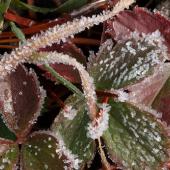




Once it disappears, my attention is captured by a network of wire fencing. The interlocking materials collect the frost in delicately, etched crystals. A leaf, entangled within netting, seems to hold on in a death grip.
Photographing the hoarfrosted wonderland while bison hover in the distance in Yellowstone Park, I find “sugarcoated” trees while the bison bodies look as though they are in a haze. And, when the bison stand near the thermals, their fine-tuned, threads of fur become sheathed in hoarfrost giving them a grizzled look.
With winter light fading in the late afternoon, the frosty formations become more pronounced against the blue shadows cast from winter’s low light.




The hoarfrost can last all day if the sub-freezing temperature combined with humidity is maintained. If either ingredient is sacrificed such as too much sun, melting will take place. Once humidity is lost, the delicate, crystallized “gems” crumble and icicles might form. When these two elements come together, take note and “shoot” for these occasions don’t cross our winter paths that often.
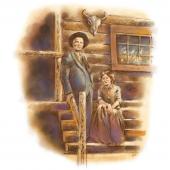




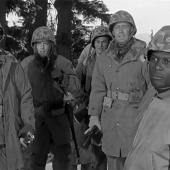

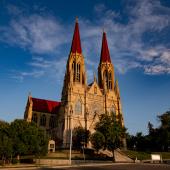


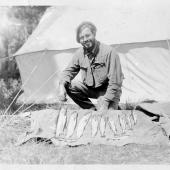
Leave a Comment Here